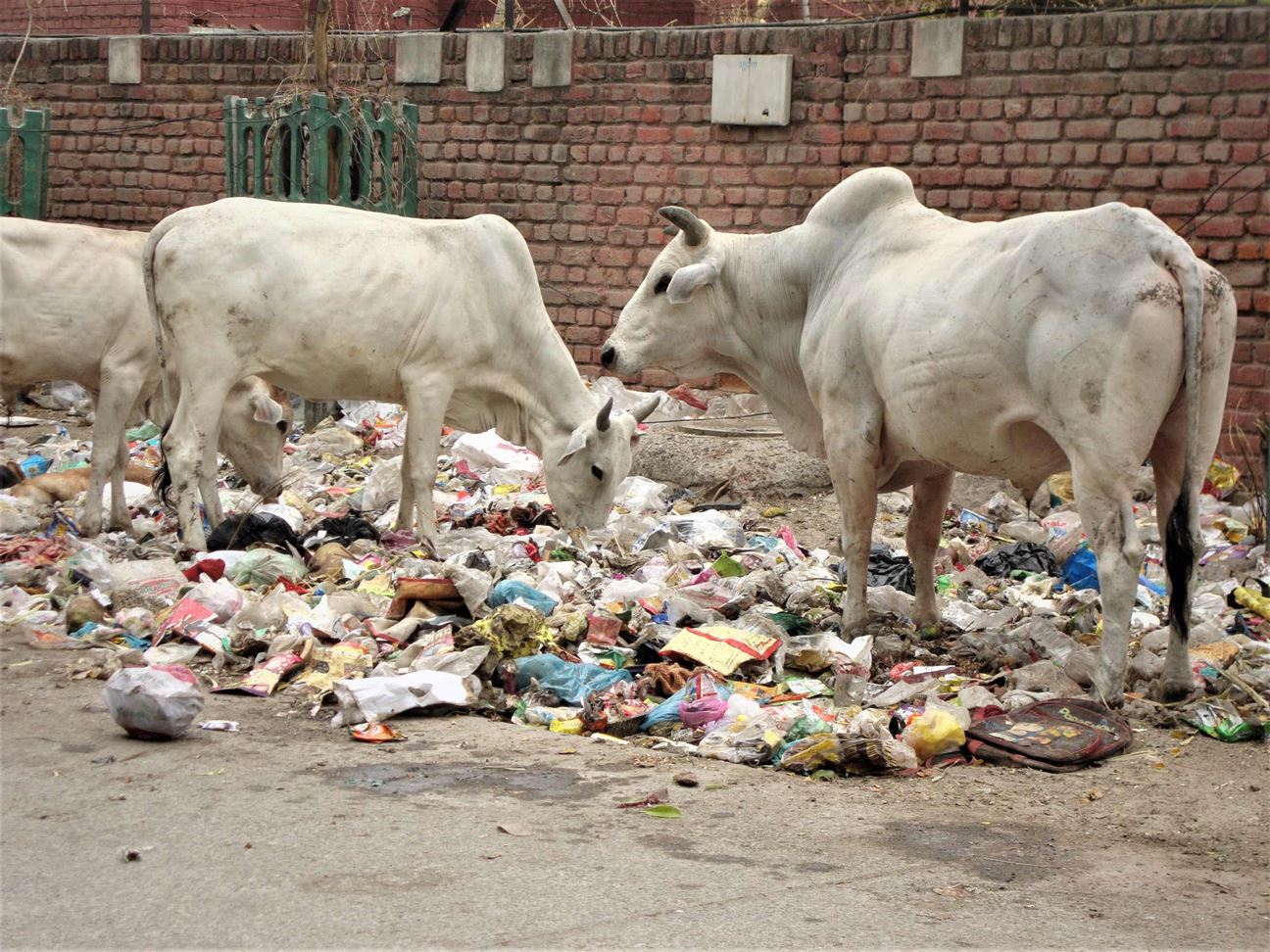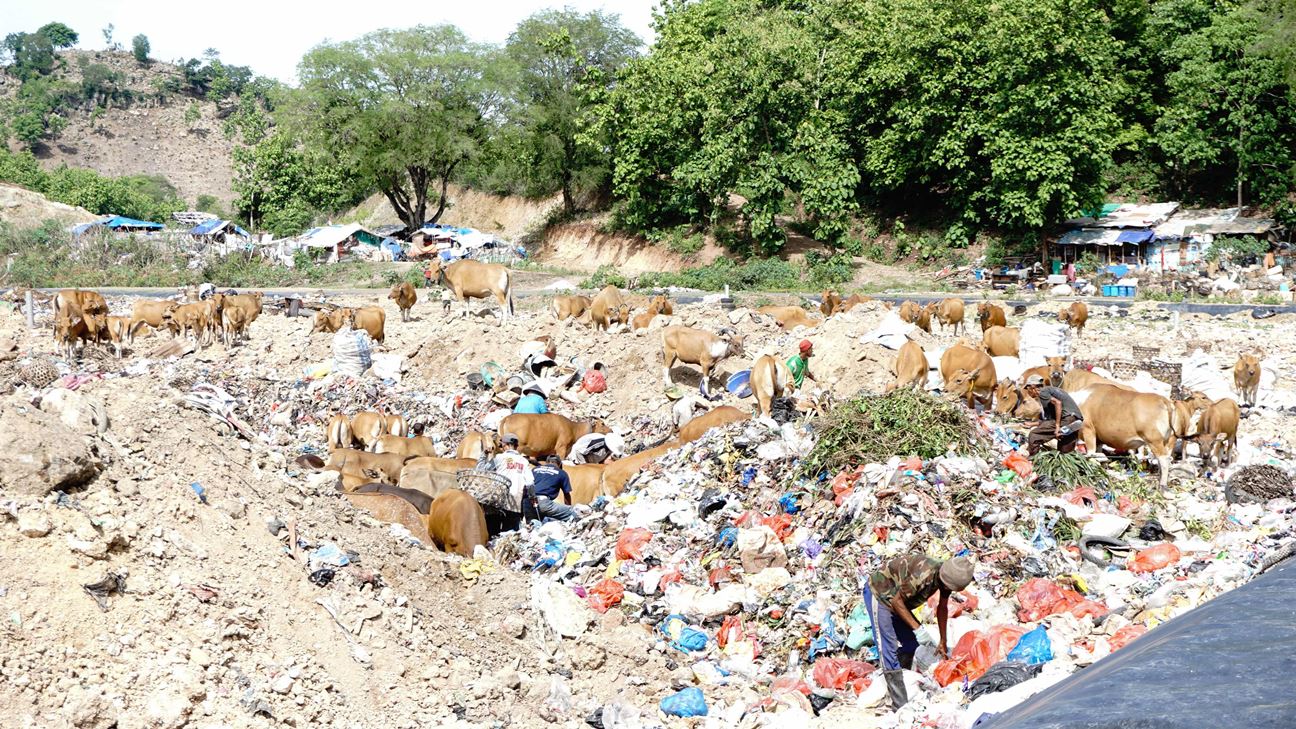Long story short: the ups and downs of the beef ban (s) may have led to an overpopulation of stray cows roaming the streets of India, and now we have rabid cows.
This is not meant to hurt religious sentiments, and it’s definitely not to support beef-eating/against veganism or even against the ban at all. It’s just factual storytelling of how an animal that was once reared in bulk for meat-eating is now left without a home or shelter, to roam the city, scavenging for food. Much like stray dogs, except these are 800 kg bovids - and as of 2019-2020, we, as a country, have seen rabid cows.

In the ancient times of 2005, the Supreme Court ruled for a universal beef-ban. It was not in the name of animal-cruelty prevention as much as it was to protect the religious sentiments of people who revered the cow as a religious symbol. However, by 2016, India was the 5th highest producer of beef in the world. How, you ask? Most of India’s beef came from water buffalos. The beef ban only prevented the slaughter of cows, oxen and their calves, not other bovids. India was also the 7th highest consumer of beef. As a side effect of this, we had a large growth surge in the number of stray cows roaming the street. How?
I’m glad you asked.
People that once reared cows in bulk, for milk or for meat, could not slaughter them, but they could not afford to take care of them after they had outgrown their economic potential. This means people abandoned their cows—setting them loose in the city. Most populated Indian cities see free-roaming cows and oxen (without carers or herders) in large numbers. Some of them look starved while some of them look all right surviving off the garbage. A surprising amount of them eat tonnes of plastic and die painful deaths. The plastic and the abandoned cows are both collateral damage of human social habits. That aside, you almost never see stray buffalos because they are slaughtered for meat and don’t have high free-roaming populations as a result.

Fast forward to 2017, we see this beef-ban escalate. In Gujarat, a law was passed, making it punishable by life imprisonment. This time, they put the law under animal cruelty prevention as well as illegal trade prevention. They made the slaughter of buffaloes and camels for meat (with bones) illegal for the first time. Despite a lot of backlash from people who said the government mustn’t control what they eat, the ban was passed. A few months later, the law was suspended again by the supreme court. Then the ban was imposed again. This up and down decreased cow and oxen ownership of farmers by 6-9% while favouring other bovids, no matter what the law said. Now, unfortunately, despite the general logistics and legalities surrounding the ambiguous state of affairs regarding cows and their meat, people can’t afford to keep cows—you never know when the next ban will hit or lift.
Cows live up to 22 years. This “ban business” has been going on for 14 years. The overpopulation of cows comes as no surprise. The ban was imposed without an enforced rehabilitation regimen in place. People can’t kill the cows but can’t afford to keep them either. Where do they go and what becomes of them? They are not wild animals and are not urban wildlife. As the law assumes, humans have no responsibility towards this animal except for not killing it, we see their quality of life degrade heavily—cows are dying from starvation. There is a likelihood of a potential increase in the stray dog population because of the increase in cow meat available to them. An increase in wildlife venturing into urban areas because of the easy stray cow meat, and then rabies in cows. We have rabid bovids in India.

For one, rabies is not curable. It is a horrible and painful way to die. Furthermore, if you think a rabid dog is dangerous, escalate that by 800 kilograms and you’ve got a rabid cow. Not to say that they go furious and bite people like dogs—rabies is a complicated disease. However, with the rabies situation regarding dogs in the country, we cannot afford to have it spill over into yet another mammal, that would be more hazardous to control. A side effect of the rising free-roaming cow population is that they are targets for starving packs of stray dogs, which this country has millions of. Once the cow becomes a regular part of their diet or they develop a taste for it, the incidences of dogs biting cows increase periodically or seasonally. Therefore, we are seeing cases of cows suffering from rabies more often in the last decade. The numbers are few and far in between for cows, but we’ve pushed ourselves to this situation due to indecisive legislation that left an animal that was meant to be protected in a hungry and hazardous situation.
Cow vigilantes: the violent groups of people who mob and lynch folk for eating beef do not uphold the rights of the very same animal. Is this beef ban religious? Or not? Is it really coming from a place of care or empathy for this animal? Fun fact: historically, water buffalos were considered “lower class” meat since buffalos have black skin. Hence, people were comfortable with their slaughter as opposed to the more “beautiful” cows. Yes, even human colourism has affected the lives of the animals we love, whether for compassion, food, or religion. Our ups and downs regarding bovids in India have played around with their population, left them homeless, exposed them to various diseases, and even cruel deaths, and yet all we do is discuss whether we need another ban. Further talks now of the easing or suspending the ban yet again will only further this Yo-Yo effect.
What do we need? To genuinely make the law about the complete welfare of the animal that it’s claiming to protect and enforce it like we enforce the beef ban. Alternatively, if the beef ban was to be lifted, then not constantly going back on that decision would stop the country from seeing such a large overpopulation of this animal with its connected consequences.